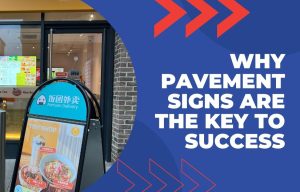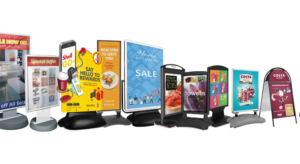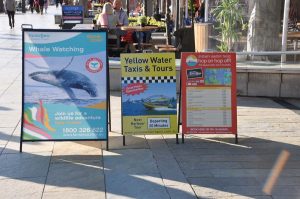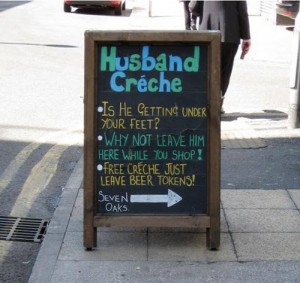At the moment there seems to be considerable pressure to ban, or at least heavily regulate, pavement or sidewalk signs in some areas. This is at a time when the high streets are suffering and they need all the help they can get to entice people into their businesses.
You can check out the rules about the law regarding pavement signs in our earlier blog article. As we pointed out, the key is to act responsibly and place your boards and pavement signs where they can be seen, but not in areas where they can inconvenience shoppers. Common sense rules the day.
One of the key things to consider for the safety of passers-by is the stability of the sign. Obviously, a sign used inside a shopping centre is not going to be affected by the wind, whereas a forecourt sign in a petrol station will be exposed at all times.
As manufacturers and suppliers of pavement signs, we carefully consider stability in the design process and when putting together our product range. We think that enables us to give a trusted perspective on the stability of various types of pavement sign designs.
Looking At The Stability Of Pavement Sign Style
A Boards
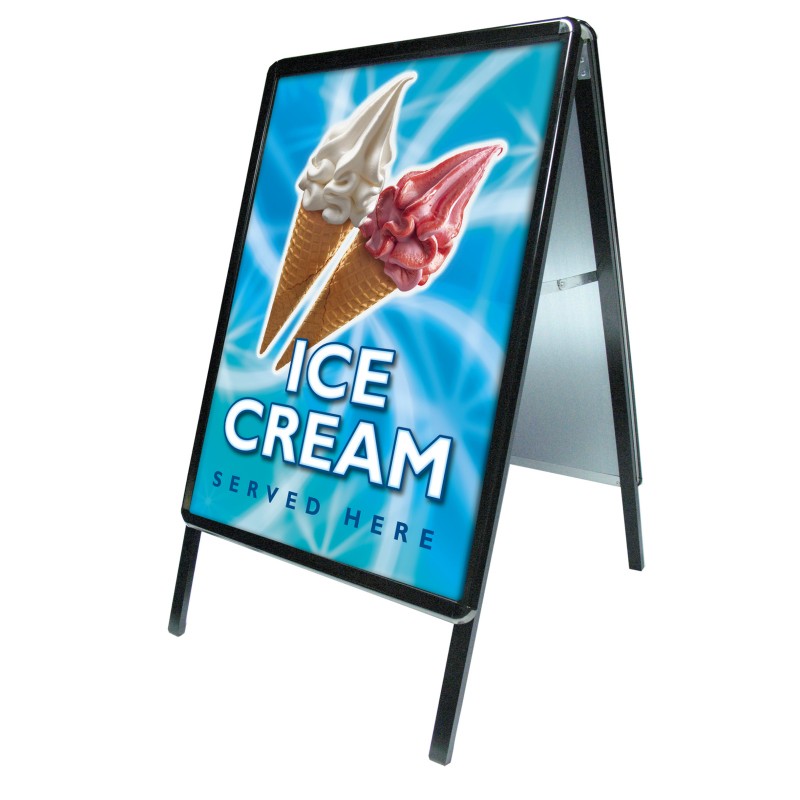
These are the least stable of any pavement sign and are only intended for use in mild weather conditions. The only thing preventing A boards from falling over is the triangular frame shape, which creates a large footprint to the front and back. Due to this design, the sides can be susceptible to knocks.
Portable, economical and easy to use they should be taken in at night and if a breeze picks up it is recommended to keep them sheltered. Although they are available in sizes from A2, A1, and A0, the larger they are the more protected they need to be.
Flexible Panel Pavement Signs
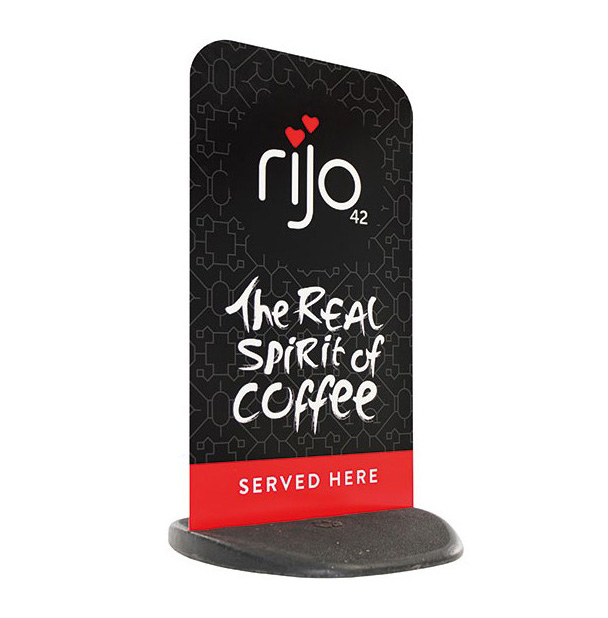
A very simple idea. A weighted rubber base with a flexible frameless aluminium display panel. When the wind blows the panels bend like a tree and ‘spill’ the wind.
There are no moving parts on flexi panel pavement signs, making them extremely reliable and stable, as well as being very easy to move and take in at night. This design is only suited to smaller signs such as A2.
Swinging Panel Signs
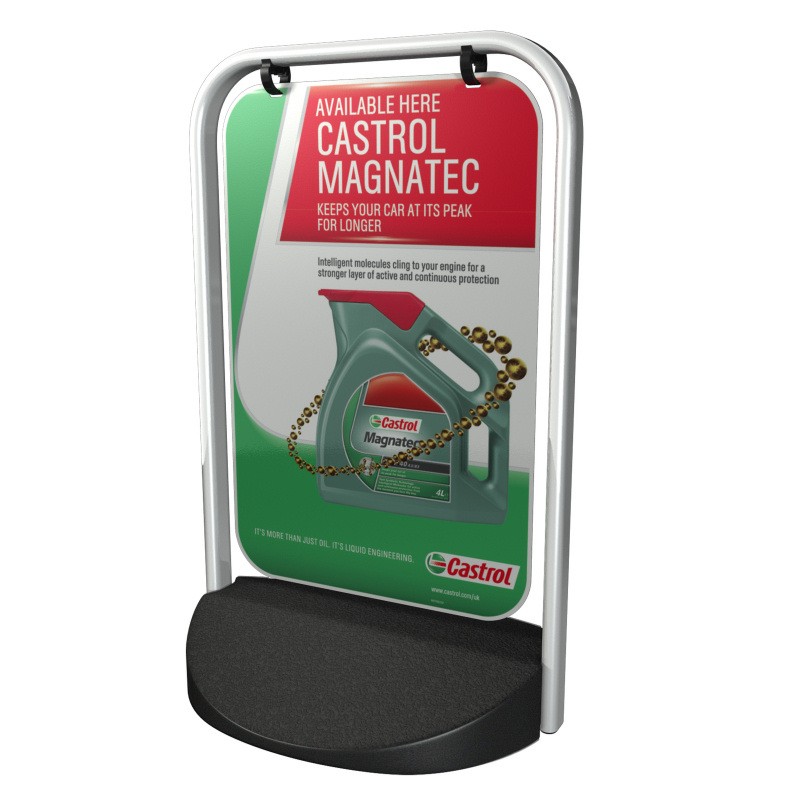
Another solution you will see on the high street is to hang the display panel from the board frame using brackets that allow the panels to “swing” in the wind.
Swinging pavement signs can either have a weighted rubber base or a folding A-frame.
The weighted base gives the sign better resistance in windy conditions and is a great option for exposed locations.
Water Based Signs
The most stable option of the designs we have covered, not only do they have weighted bases that can be filled with water or sand, but many options also have wind-dampening springs. When the wind picks up the display panel of the signs can bend in the wind, putting less pressure on the base.
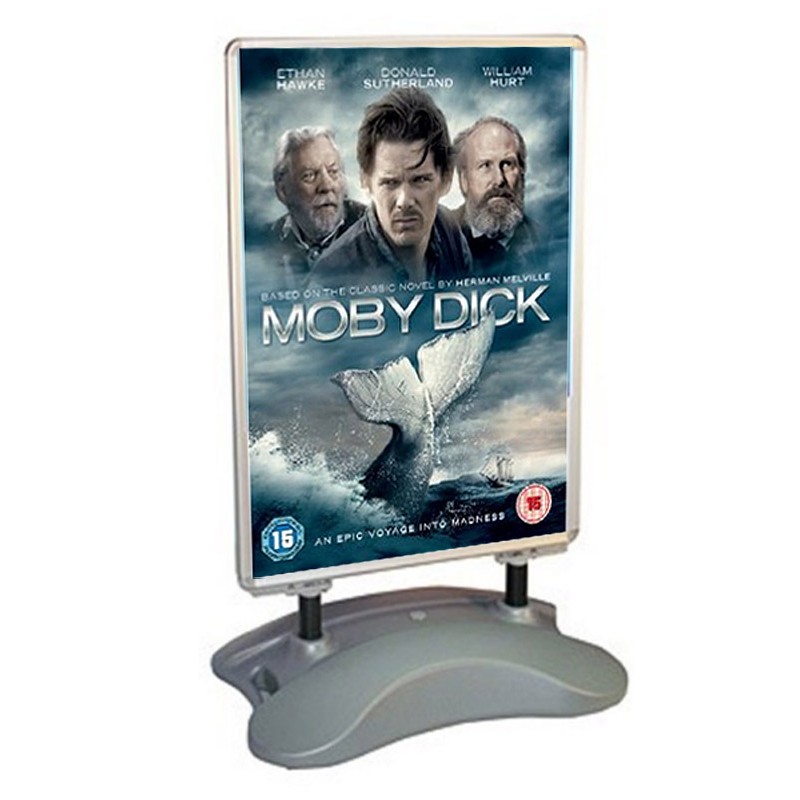
Larger versions such as the A0 Windjammer sometimes require additional weights if they are to be left out at night. Most water based signs have wheels for easy movement, even when the base is filled.
Large water-based styles are sometimes used for semi-permanent forecourt signs. Some of the largest designs don’t have springs, but will have a much larger water capacity to increase the weight of the base, and retain stability in windy conditions.
With all display products, there is only so much wind they can cope with so the order of the day is common sense. If heavy winds are forecast it’s always safer to the public and the lifespan of your sign to move it to a more sheltered area.
Hopefully, this guide has been helpful, but if you have any questions, pop them in the comments below and our team of experts will be on hand to help.

